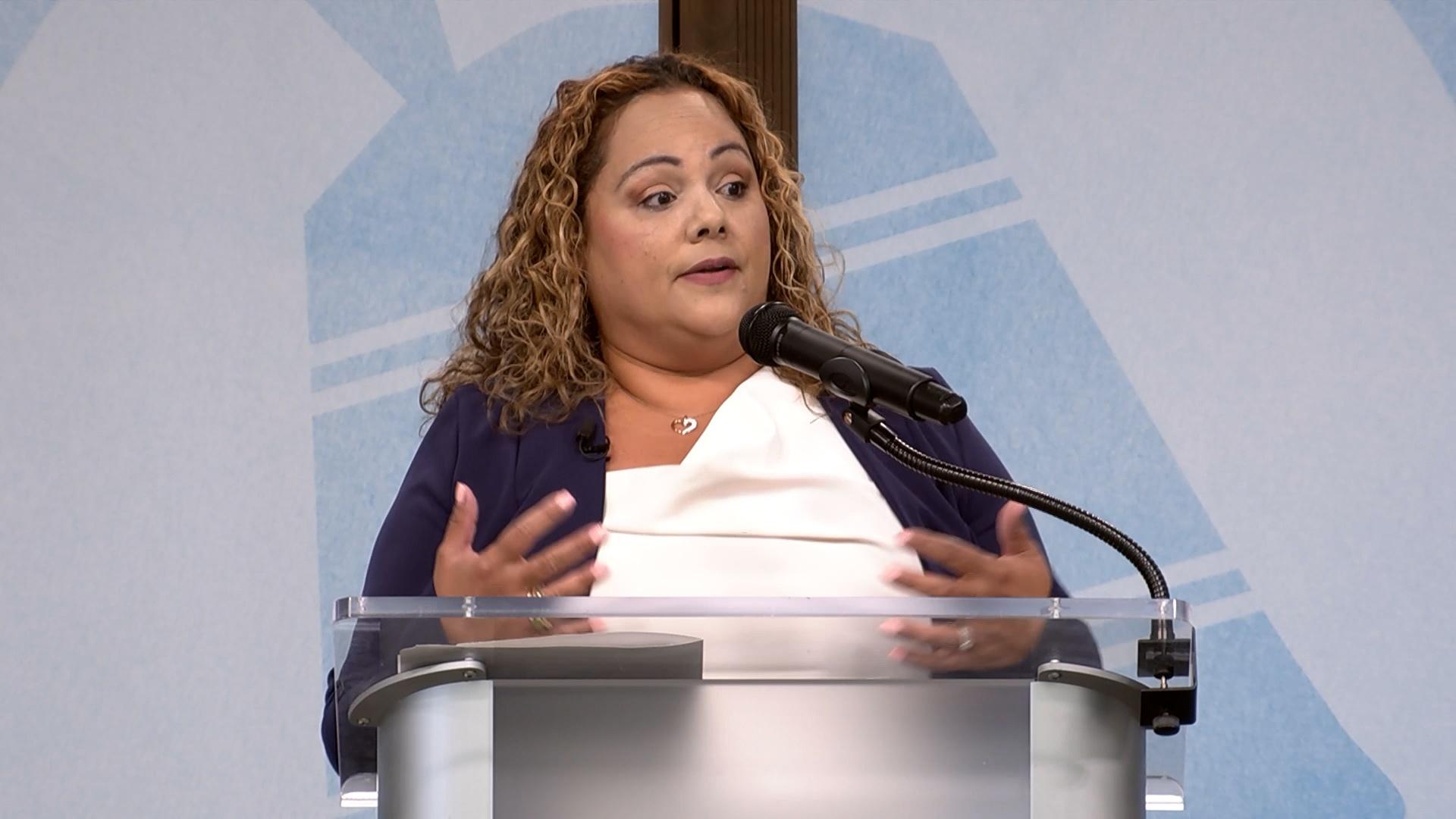Report on Shelby FFA Participation in Soils Career Development Events and Contribution to Sustainable Development Goals
Event Overview and Objectives
Members of the Shelby FFA recently participated in Agricultural and Urban Soils Career Development Events (CDE) at the Richland County and District 2 levels. These events are designed to provide practical, hands-on education in soil science, directly supporting several key United Nations Sustainable Development Goals (SDGs).
- The primary objective is to challenge students to apply scientific knowledge of soil science, conservation, and land management to real-world scenarios.
- This educational initiative fosters an understanding of sustainable practices essential for both agricultural productivity and urban development.
Technical Evaluation and Sustainable Land Management
During the competitions, students engaged in a comprehensive evaluation process that forms the basis for sustainable land use recommendations.
Core Evaluation Activities
- Analysis of soil pits to determine key characteristics.
- Assessment of soil texture, slope, drainage, erosion, and land capability.
- Formulation of recommendations for land use, conservation practices, and urban planning based on scientific findings.
Competition Focus and SDG Linkages
- Agricultural Soils Contest: This component centers on land for farming and crop production, directly addressing SDG 2 (Zero Hunger) by promoting techniques for sustainable agriculture and food security.
- Urban Soils Contest: This component emphasizes soil considerations for construction and landscaping, aligning with SDG 11 (Sustainable Cities and Communities) by contributing to resilient infrastructure and sustainable urban planning.
Competition Results
Richland County Level Competition
- Rural Team: Placed 2nd. Team members included Kayne Cooke, Sam Fairchild, Kyleigh Biglin, and Conner Gayheart.
- Urban Individuals: Violet Auck achieved 1st place in the county contest.
District 2 Level Competition
- Rural Team: Placed 5th, securing a position at the State Soils CDE.
- Individual Achievements:
- Sam Fairchild: Placed 1st in the rural contest.
- Violet Auck: Placed 1st in the urban contest.
Alignment with Sustainable Development Goals (SDGs)
The Soils CDE is a significant educational tool that prepares students to contribute to global sustainability targets. The skills developed are integral to achieving several SDGs.
- SDG 4: Quality Education: The event provides specialized vocational training, equipping students with critical thinking skills and technical knowledge for careers in agriculture, conservation, and environmental science.
- SDG 12: Responsible Consumption and Production: By learning to assess land capability, students are trained in the sustainable management and efficient use of natural resources.
- SDG 15: Life on Land: The core focus on soil health, erosion control, and conservation practices directly contributes to the protection of terrestrial ecosystems and the reversal of land degradation.
Analysis of Sustainable Development Goals in the Article
1. Which SDGs are addressed or connected to the issues highlighted in the article?
The article highlights issues and activities that are directly connected to several Sustainable Development Goals (SDGs). The core focus on soil science, land management, conservation, and education for sustainable practices links the content to the following SDGs:
- SDG 2: Zero Hunger: The “Agricultural Soils” contest, which focuses on land use for farming and crop production, directly relates to ensuring sustainable food production systems.
- SDG 4: Quality Education: The entire article is about a Career Development Event (CDE) for students, which aims to equip them with practical knowledge and skills for future careers in environmental science and agriculture, aligning with education for sustainable development.
- SDG 11: Sustainable Cities and Communities: The “Urban Soils” contest, with its emphasis on soil considerations for construction, landscaping, and urban planning, connects to the goal of making human settlements sustainable.
- SDG 15: Life on Land: The central theme of evaluating soil health, erosion, and land capability, and recommending conservation practices, is at the heart of protecting terrestrial ecosystems and halting land degradation.
2. What specific targets under those SDGs can be identified based on the article’s content?
Based on the activities described, specific targets under the identified SDGs can be pinpointed:
-
SDG 2: Zero Hunger
- Target 2.4: “By 2030, ensure sustainable food production systems and implement resilient agricultural practices that increase productivity and production… and that progressively improve land and soil quality.” The article mentions that the Agricultural Soils contest focuses on “land used for farming and crop production” and making “recommendations for proper land use,” which are essential components of improving land and soil quality for sustainable agriculture.
-
SDG 4: Quality Education
- Target 4.7: “By 2030, ensure that all learners acquire the knowledge and skills needed to promote sustainable development…” The article explicitly states that the Soils CDE “helps students develop critical thinking skills and an appreciation for natural resources, while also preparing them for potential future careers in agriculture, conservation and environmental science.” This is a direct example of education for sustainable development in action.
-
SDG 11: Sustainable Cities and Communities
- Target 11.3: “By 2030, enhance inclusive and sustainable urbanization and capacity for… sustainable human settlement planning and management…” The Urban Soils contest, which requires students to make recommendations for “urban planning” based on soil characteristics, directly contributes to building the capacity and knowledge base required for sustainable urban development.
-
SDG 15: Life on Land
- Target 15.3: “By 2030, combat desertification, restore degraded land and soil… and strive to achieve a land degradation-neutral world.” The students’ task of evaluating soil pits for characteristics like “erosion and land capability” and recommending “conservation practices” is a fundamental activity aimed at understanding and combating land degradation.
3. Are there any indicators mentioned or implied in the article that can be used to measure progress towards the identified targets?
The article does not mention official SDG indicators with quantitative data, but the activities described imply the use of metrics and assessments that align with the principles of these indicators.
-
For SDG 2, Target 2.4:
- Implied Indicator: The students’ evaluation of soil for “proper land use” in farming implies an assessment of agricultural land sustainability. This relates to the concept behind Indicator 2.4.1 (Proportion of agricultural area under productive and sustainable agriculture). The students are learning the foundational skills to make such assessments.
-
For SDG 4, Target 4.7:
- Implied Indicator: The existence of the “Agricultural Soils and Urban Soils Career Development Events” and the participation of “Shelby FFA members” serve as a direct indicator. This aligns with Indicator 4.7.1, which measures the extent to which education for sustainable development is mainstreamed in curricula and student activities. The CDE is a practical implementation of this.
-
For SDG 11, Target 11.3:
- Implied Indicator: The contest’s focus on making “recommendations for proper land use… and urban planning” based on soil analysis implies the development of capacity for sustainable urban management. The number of students trained in evaluating urban soils can be seen as a proxy indicator for building this capacity.
-
For SDG 15, Target 15.3:
- Implied Indicator: The students’ direct evaluation of “erosion” is a key component of measuring land degradation. This activity is a practical, small-scale application of the measurement required for Indicator 15.3.1 (Proportion of land that is degraded over total land area).
4. Summary Table of SDGs, Targets, and Indicators
| SDGs | Targets | Indicators (as identified or implied in the article) |
|---|---|---|
| SDG 2: Zero Hunger | 2.4: Ensure sustainable food production systems and implement resilient agricultural practices that progressively improve land and soil quality. | The evaluation of soil for “farming and crop production” implies an assessment related to Indicator 2.4.1 (Proportion of agricultural area under productive and sustainable agriculture). |
| SDG 4: Quality Education | 4.7: Ensure all learners acquire the knowledge and skills needed to promote sustainable development. | The existence of the Soils CDE for FFA students is a direct example of education for sustainable development, aligning with the principle of Indicator 4.7.1. |
| SDG 11: Sustainable Cities and Communities | 11.3: Enhance inclusive and sustainable urbanization and capacity for sustainable human settlement planning. | The “Urban Soils” contest, which involves making recommendations for “urban planning,” implies building capacity for sustainable urban management. |
| SDG 15: Life on Land | 15.3: Combat desertification, restore degraded land and soil, and strive to achieve a land degradation-neutral world. | The direct evaluation of “erosion” by students is a practical application of measuring land degradation, which is central to Indicator 15.3.1 (Proportion of land that is degraded). |
Source: richlandsource.com






